
BS6 Kawasaki Vulcan S: Raw And Punchy
- Jul 4, 2021
- Views : 23059

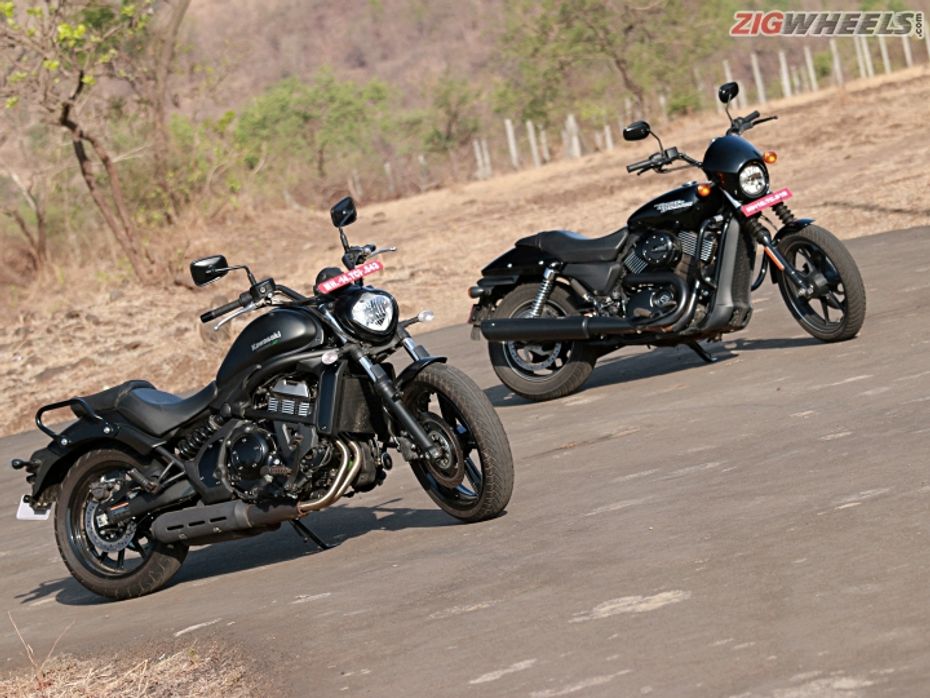
Cruisers have their own charm. A relaxed, almost lazy riding position, large motors brimming with torque, and massive road presence have garnered this segment a lot of followers, and even some manufacturers that make just cruisers. Case in point: Harley-Davidson and Indian Motorcycles.
While the Indian bike market has its fair share of cruisers, it's a surprise that the sub-Rs 7 lakh rupee multi-cylinder cruiser market consists of just the Harley Davidson Street 750 and the Kawasaki Vulcan S. While the Vulcan S features a true-blue cruiser silhouette with an entry sportbike motor, the Street 750 flirts with the cruiser/roadster format but gets a V-twin motor, a staple for cruisers.
The Street 750 has been around for a while. It is the only bike in the Harley-Davidson portfolio other than the Street Rod to be locally manufactured, so its pricing is quite competitive. The Vulcan S is assembled in India so it is slightly more expensive but it feels put together really well.
We rode both bikes in the city, on the highway and also took them out to the countryside. Here’s how they performed.
Design and features
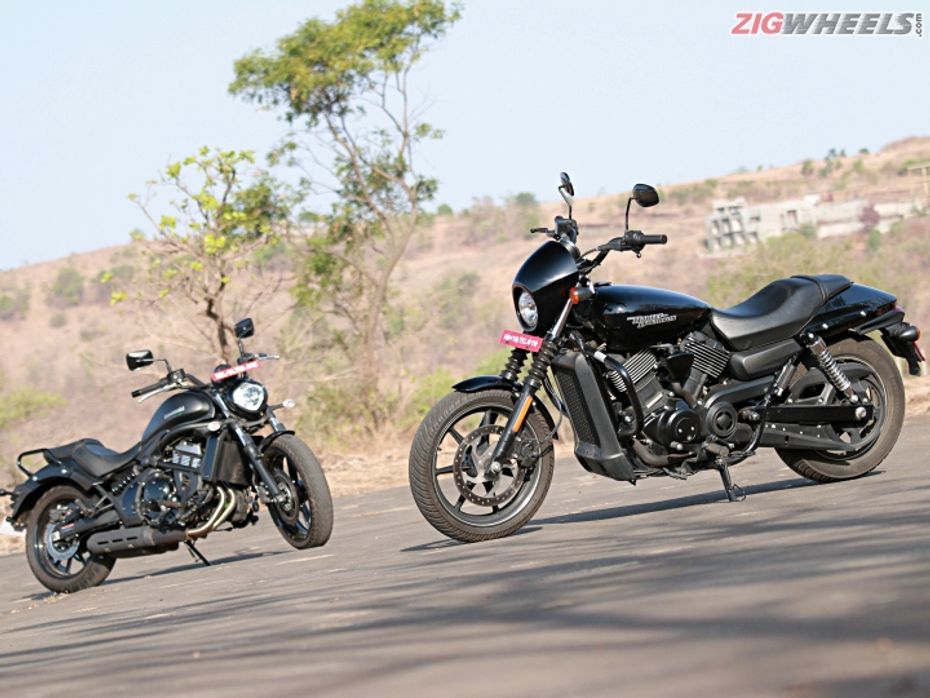
The term “boulevard cruiser” came about with the idea to showcase your bike while cruising at slow speeds. Lots of chrome was mandatory, as were bright paint jobs. Neither of the bikes here carries those traits. Both have a distinct lack of chrome and are dressed in black but it's the Vulcan S that stands out here.
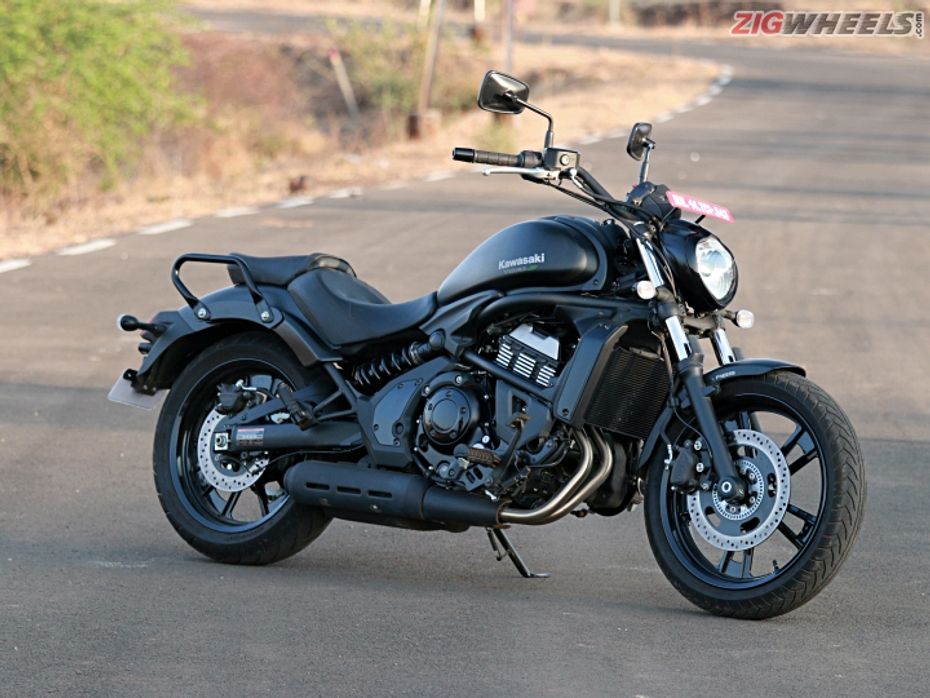
The satin black paint job gives it a premium look while overall it’s got more road presence owing to its size.
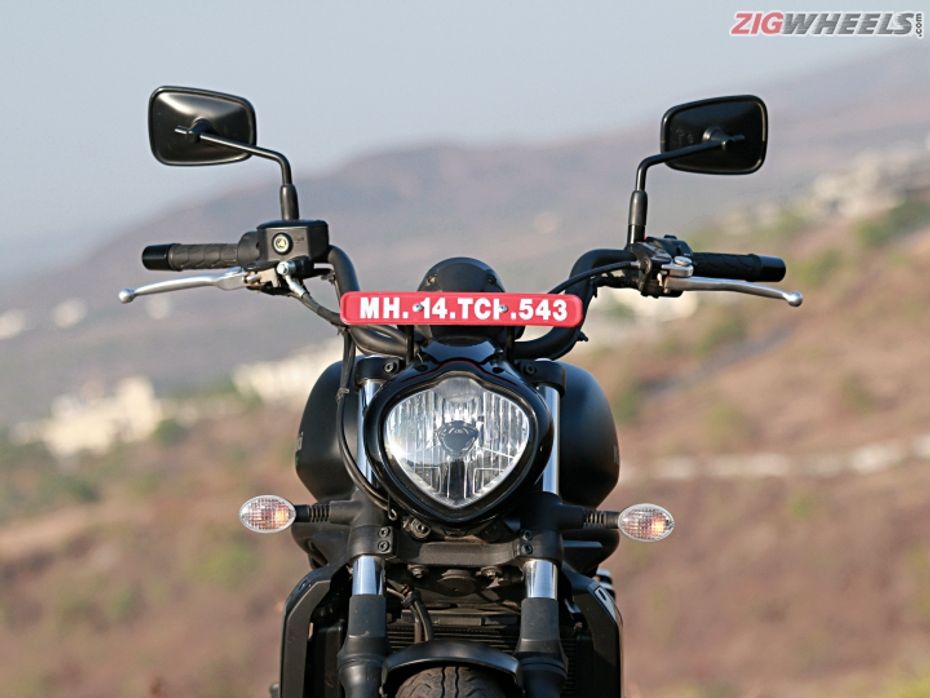
Neither bike comes with an LED headlamp but the Vulcan gets a tiny LED pilot lamp integrated into its somewhat oddly shaped headlamp. The alloy wheels also feature a unique design.
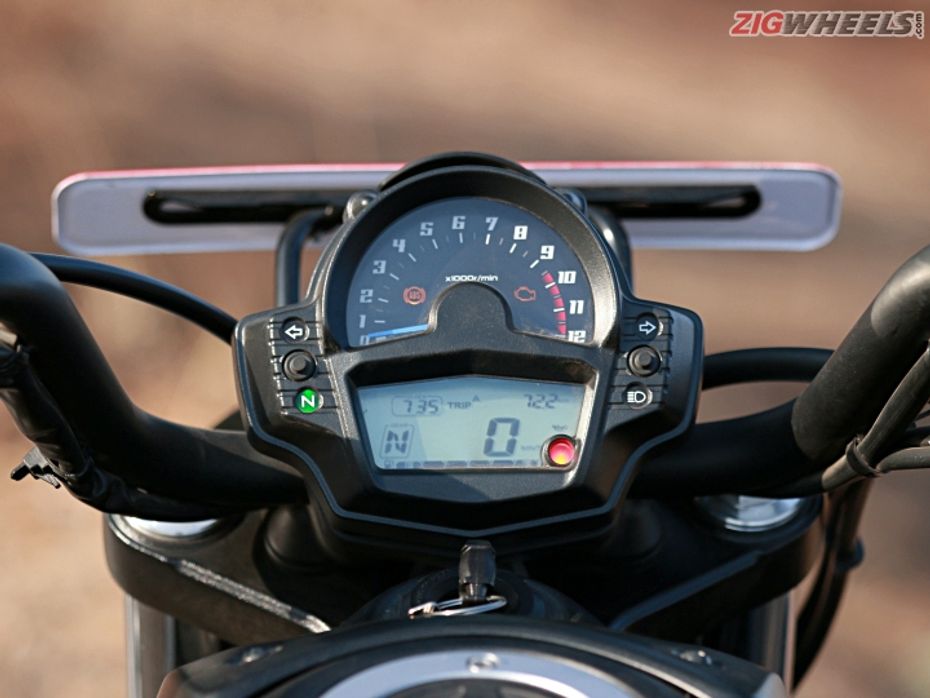
We loved the large instrument cluster which encloses an equally large and easy to read digital display.
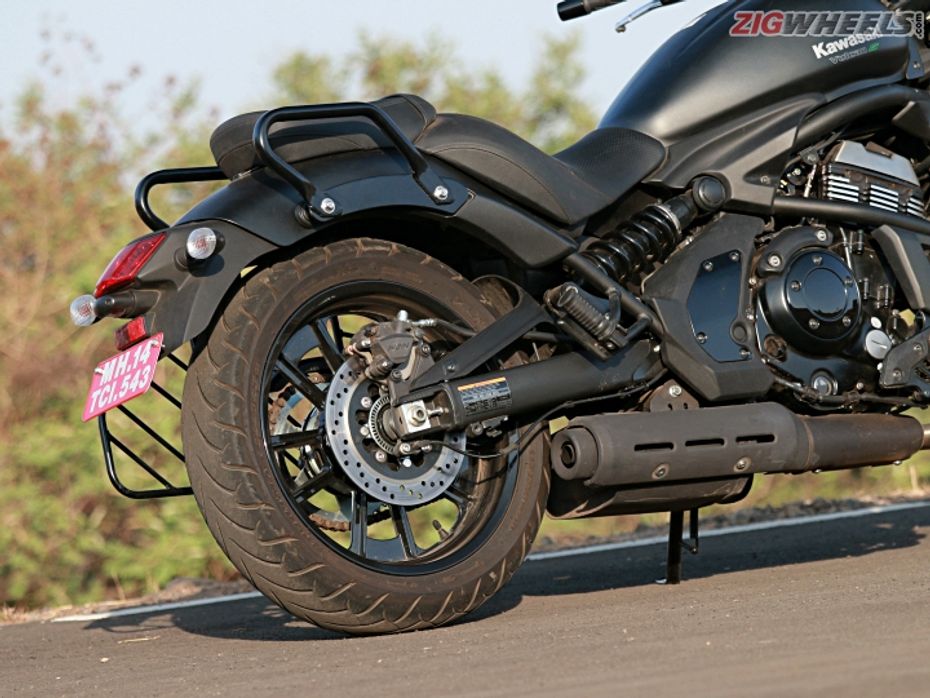
The design elements we did not like were the huge saree guard and an exhaust that would look more at home on a Jeep. And the grab rails are quite ugly too, but at least they are functional.
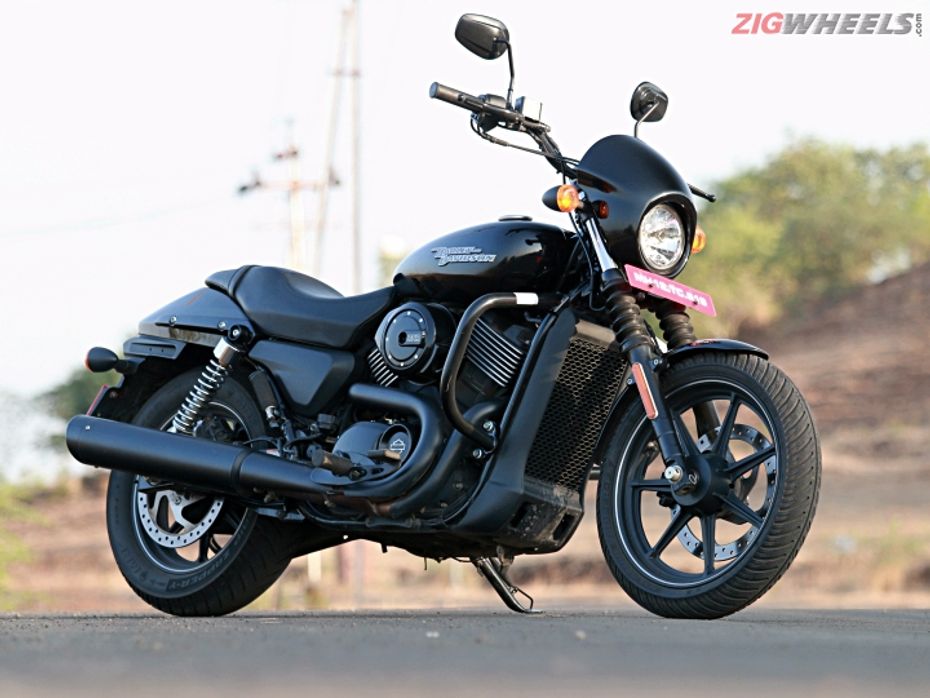
The Street 750’s design feels like a cross between a cruiser and a roadster. It might not look like a cruiser in the traditional sense, but it does manage to look cool. The headlamp shroud adds meanness and we love the way the exhaust headers wrap around the V-twin motor.
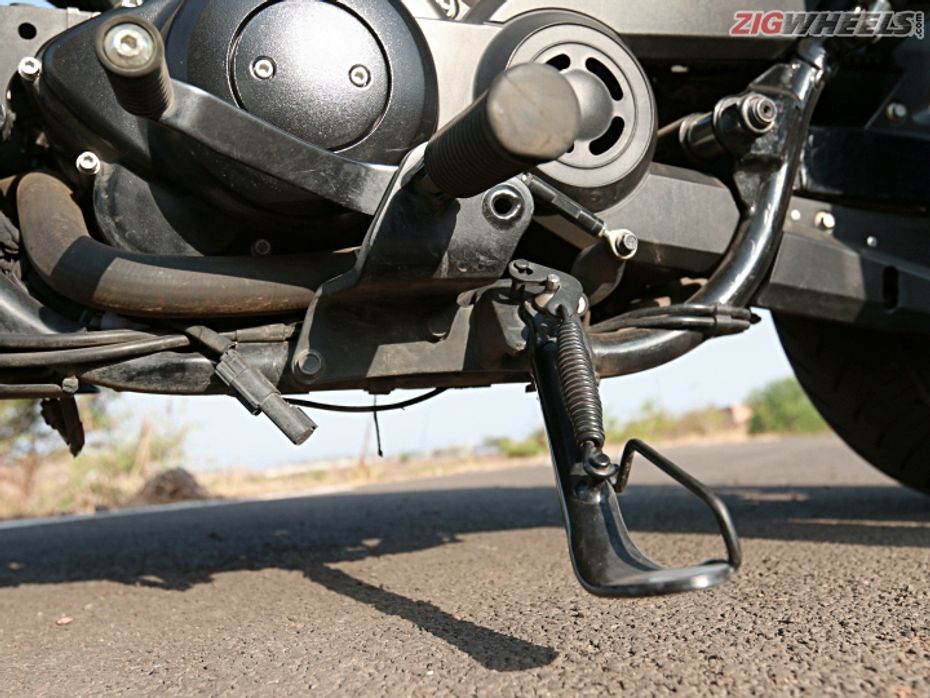
What we didn’t like, though, were the loose hanging wires and exposed connectors around the engine. The instrument cluster too is a bit basic and could have done with a larger digital readout. Of the two, it is the Kawasaki that impresses in terms of fit and finish and as well as overall quality.
Ergonomics
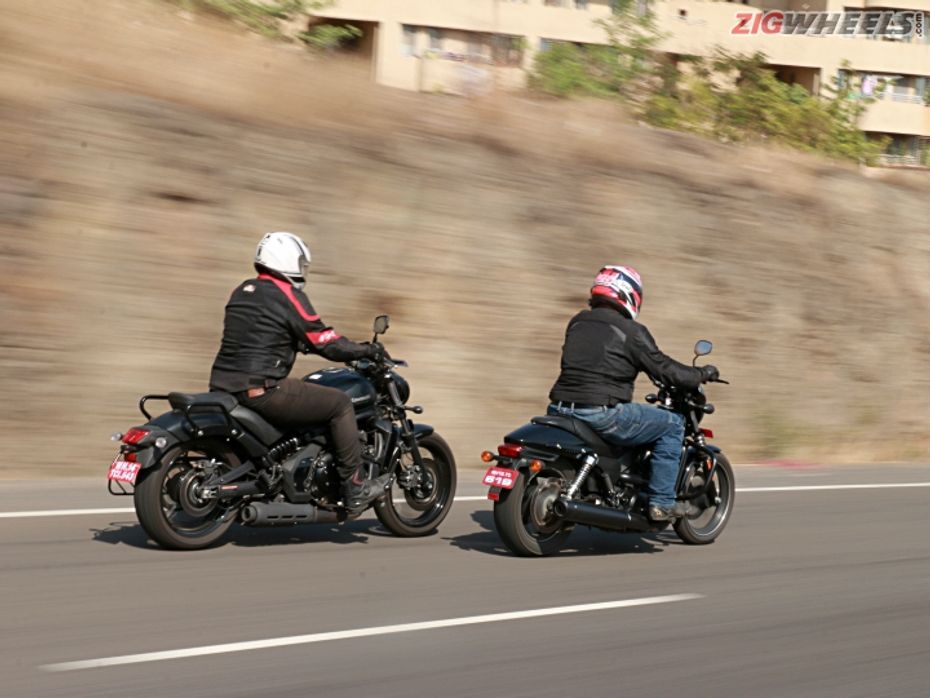
One of the USPs of cruisers is its lazy and comfortable riding position. In that sense, the Vulcan should win here. That's not the case though. Despite the traditional feet forward, low seat, arms outstretched configuration, the Vulcan’s riding position does not feel natural or comfortable.

The footpegs are a stretch even for our 5ft 10-inch frames and would’ve still been workable if not for the handlebars. They are designed in such a way that your wrists point outward. That turns out to be uncomfortable after a while on the saddle and especially while executing U-turns.
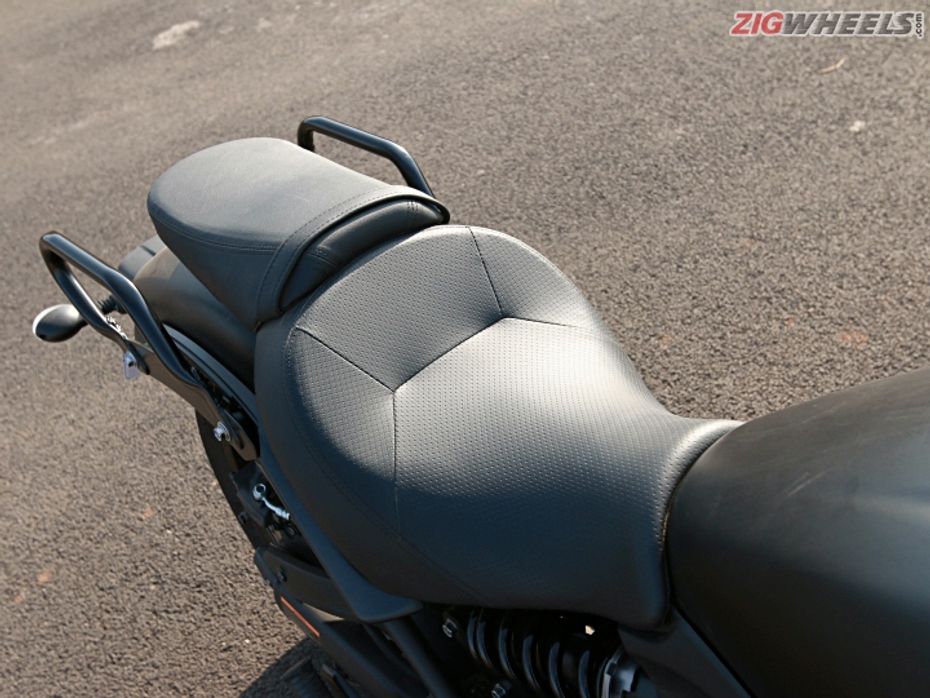
That said, the wide seat is comfortable with the cushioning giving little reason to complain. Pillion seat is spacious as well and those ugly looking grab rails are quite useful.
The Street 750 might not offer the traditional cruiser stretch but it does feel a lot more natural from the saddle. The mid-set foot controls and taller bars have you in an almost upright seating position which feels comfortable in the city as well as the long highway run.
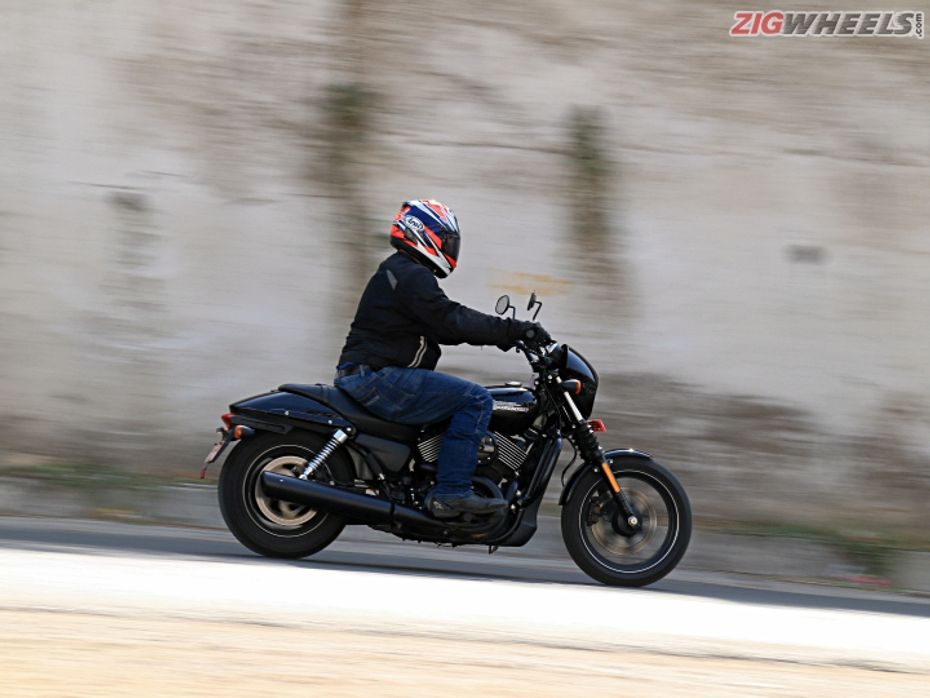
You also feel more in control, which helps in manoeuvring in heavy traffic as well as scraping the pegs on twisties. Of course, like all Harleys, the V-twin engine configuration has your right knee almost touching the cylinder head. And the exhaust pipes stick out a fair bit so you can easily singe your right leg if you aren't careful.
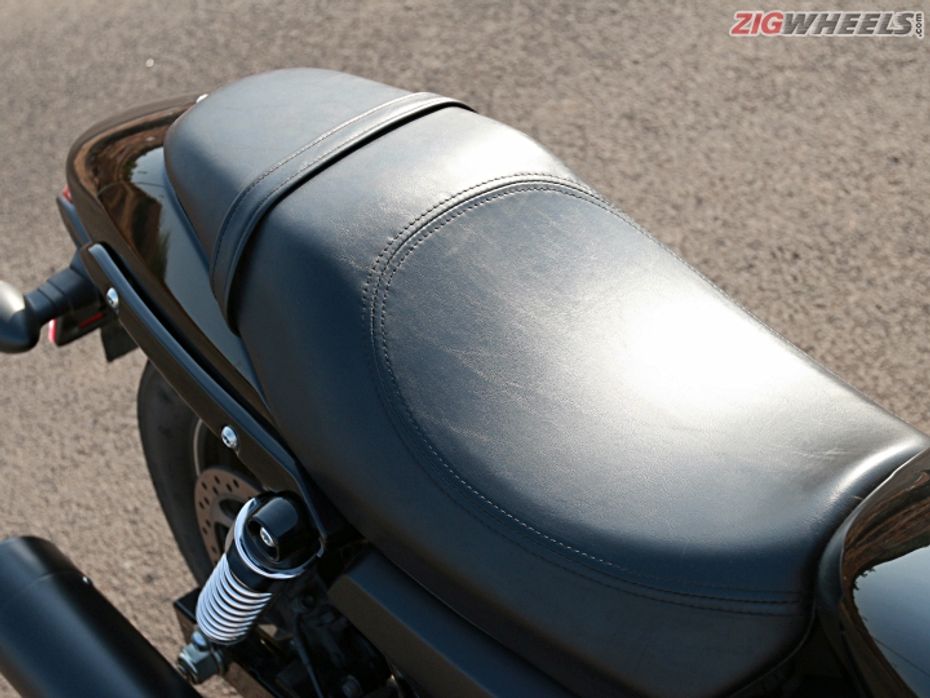
Pillion comfort is a joke on the Street 750. If you wish to take your significant other on rides, better look for a larger seat in the Harley catalogue to replace the small sloping unit. Overall, the Harley would be our pick here but if you prefer to ride with a pillion, the Vulcan is the better bet.
Engine and Performance
While the Vulcan range of cruisers in Kawasaki’s portfolio, have used V-twin powerplants, the small Vulcan S comes with the Ninja 650’s parallel twin motor. The 649cc liquid-cooled mill makes 61PS at 7500rpm and 63Nm at 6600rpm, which is 7PS and 3Nm less than its faired sibling. But then this motor has been tuned for better low to mid range grunt.

The Street 750’s Revolution X motor too is a stark departure from traditional Harley V-twins. For starters, it is liquid-cooled and uses overhead cams instead of pushrods. The result is a more efficient, faster revving and refined motor. It makes 59Nm at 3750rpm, and like most V-twins has a relatively low redline at 6750rpm.
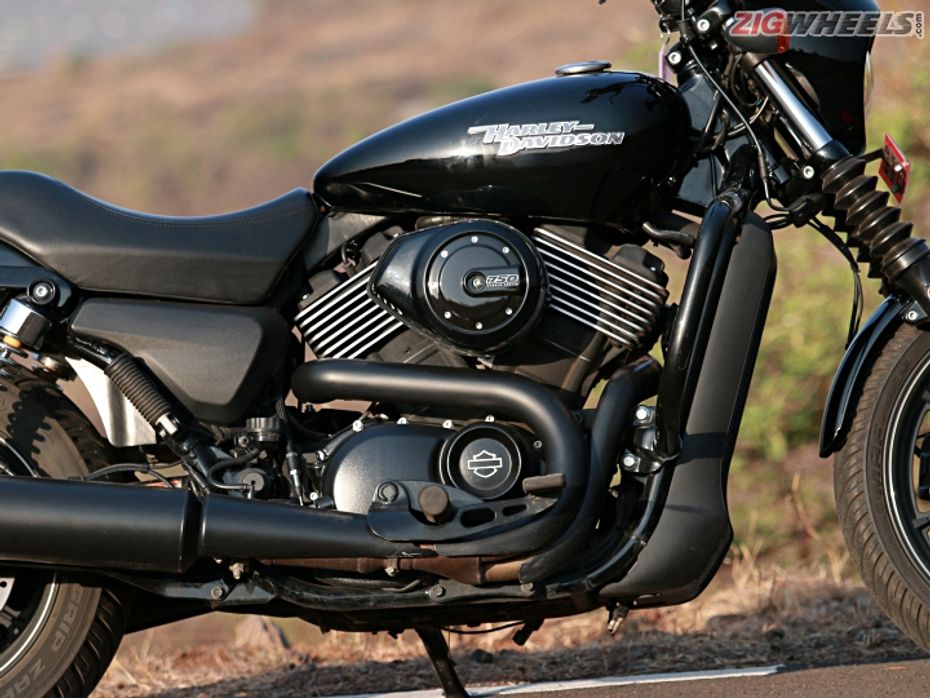
Despite weighing 2kg more, the Vulcan S is 0.3sec quicker to 100kmph than the Street 750. It reaches the ton in 5.86 seconds compared to the Street’s 6.19 seconds. Now it isn’t just the extra torque that makes the Vulcan faster, as its peak torque comes much higher in the rev band. The Vulcan’s parallel twin motor revs faster, allowing for faster acceleration times. It also helps that the Vulcan needs just one gearshift to reach 100kmph compared to two gearchanges on the Street.

It is the same story in the in-gear acceleration runs. The Vulcan S does 30-70kmph in third gear in 2.93 seconds while 40-80kmph in fourth gear comes up in 3.48 seconds. The Street 750 is slightly slower, with 30-70kmph coming up in 3.12 seconds and 40-80kmph coming up in 3.95 seconds. Both bikes have good mid-range torque that allows you to ride effortlessly in higher gears in the city. It shows in the fuel efficiency as well. The Street 750 could be ridden a gear higher in city runs and managed to deliver 24.9kmpl in the city while the Vulcan S returned 22.8kmpl.
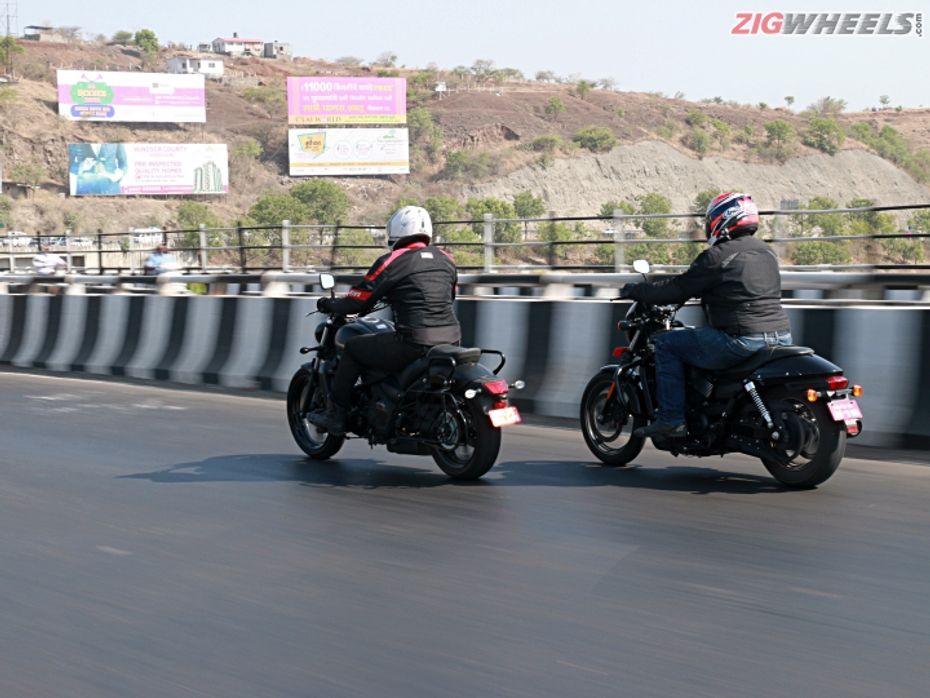
This eagerness also helps during highway runs as overtaking at speeds below 100kmph on the Harley is a quicker and stress-free affair. It does a relaxed 100kmph in 4000rpm in sixth gear and that’s the sweet spot as post 5000rpm the motor starts to feel strained. The taller gearing and wider rev band on the Vulcan S, helps it comfortably cruise at higher speeds. In sixth gear at 5000rpm, the bike cruises at speeds of around 105kmph. You could ride at that speed all day or you could ride at 120kmph at 6000rpm. While the motor feels as comfortable there, it does require opening up the throttle a fair bit, which can add a bit of wrist strain. The Vulcan S returned 25.8kmpl on the Highway test cycle while the Street 750 delivered a slightly better 27.6kmpl. The Vulcan’s slightly larger 14-litre fuel tank gives it a theoretical range of 361km, same as the Street 750.
Both bikes come with a six-speed gearbox but the Street 750’s shifts are smoother and easier to operate. Clutch feel is lighter on the Harley as well.
Both motors impress in terms of performance and refinement but the Street 750’s unit edges ahead with its flexibility and eagerness at low revs. While it might not have the refinement of the Vulcan’s unit, it’s still pretty good and it does sound better than the Kawasaki.
Ride and Handling
Both bikes feature different frames and rear suspension layout. The Vulcan S gets a modified steel perimeter frame from the last generation Ninja 650. Apart from the conventional front forks, it gets a side-mounted rear monoshock. The Street 750 comes with a more basic diamond-type frame with telescopic front forks and dual rear dampers.
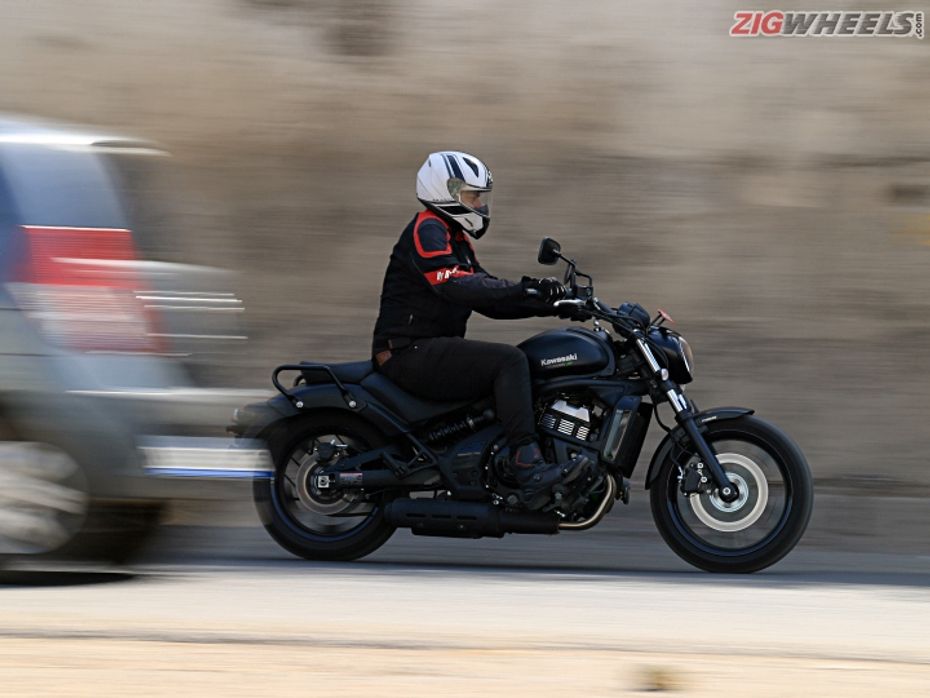
Now, the Vulcan has a softer suspension setup, especially the rear, which bottoms out quite easily. The riding position means you are sitting far back on the bike so you end up feeling the shocks on your spine every time the rear suspension bottoms out. It also bounces a bit on bad roads so you do have to reduce speeds while navigating over bumps.
Despite the basic setup, the Street 750’s suspension is tuned well. It is slightly on the stiffer side but is well damped. Since it does not bottom out easily, you can go faster over bad roads. On the rare occasion that it does bottom out, the upright seating position and damping ensure you don't feel the aftershocks. It is also possible to stand on the footpegs if you encounter a large speed breaker.
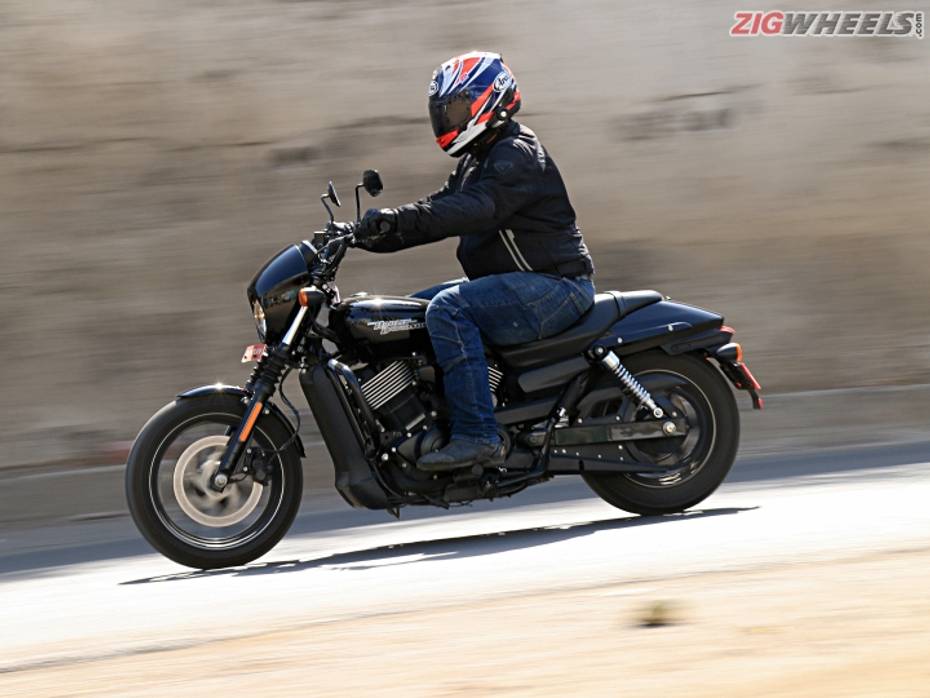
Another issue is the Vulcan’s low 130mm ground clearance. This coupled with the long wheelbase and softer suspension means the exhaust box scrapes easily over large speed breakers. The Street 750 faces no such issues given its higher 145mm ground clearance.
The Vulcan S has a smaller 31-degree rake compared to the Street’s 32 degrees. So you would imagine that the Kawasaki feels more nimble than the Harley. But that's not the case, since the Kawi’s trail, at 120mm, is larger than Harley’s 115mm, and so is the wheelbase, at 1575mm versus 1520mm respectively. Wheel sizes are different as well. The Vulcan S features 18-inch front and 17-inch rear wheels while the Street 750 gets 17-inch front and 15-inch rear wheels. Both bikes weigh quite a bit. The Vulcan S weighs 235kg while the Street 750 comes in at 233 (kerb). These aren't exactly corner-carvers, partly due to their long wheelbases and low cornering clearances. If you take them to any winding road, both bikes are going to scrape footpegs pretty quick. On the Harley though, you are more confident as the handling feels neutral. The front end feels precise and planted and tips in quicker. Mid-corner bumps are not an issue thanks to the suspension setup and the upright seating posture that gives you a sense of being in control even when leaned over.
The front end on the Vulcan S feels vague partly due to the longer trail and swept back handlebars. A fatter and larger tyre also makes the front slightly heavier and lazier to turn in. It has good mid-corner grip owing to the fatter and stickier tyres but gets unsettled easily on mid-corner bumps.

Braking setup on the Harley includes a 292mm front disc with a two-piston caliper and a 260mm rear disc with a two-piston caliper. The Kawasaki gets a larger 300mm front disc with a two-piston caliper but a smaller 250mm rear disc with a single piston caliper. ABS is standard on both bikes.
Despite the updated brakes and inclusion of ABS, the Street 750’s rear steps out under hard braking, causing us to dial down on brake force. Brake feel is an improvement on last year’s model but still feels wooden. This affects the 100-0kmph braking distance at 53.05 metres and 80-0kmph braking distance at 33.48 metres.
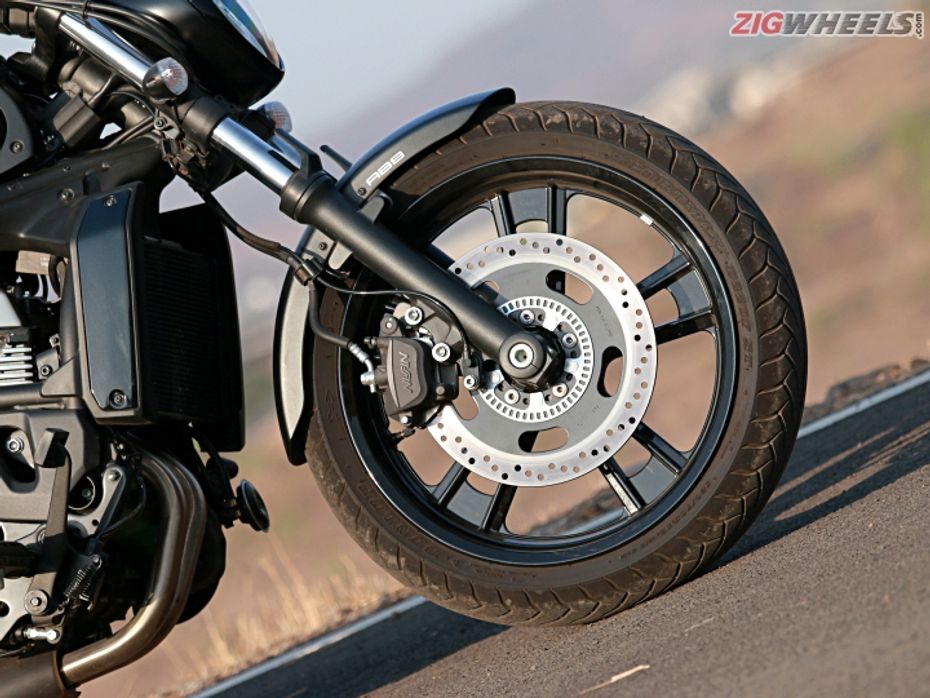
The Vulcan S, on the other hand, impresses with its 100-0kmph braking distance of 46.28 metres and 80-0kmph distance of 28.68 metres. Brake feel and bite is fantastic and the bike is quite stable under hard braking. The good braking figures can be attributed to the superior 120/70 R18 front and 160/60 R17 rear Dunlop Sportmax tyres that offer fantastic grip. While Harley’s 100/80 R17 front and 150/70 R15 rear MRFs offer decent grip in corners, they do not inspire much confidence under hard braking.
Here the Harley Street 750 is ahead thanks to its well-balanced ride and handling package.
Thoughts
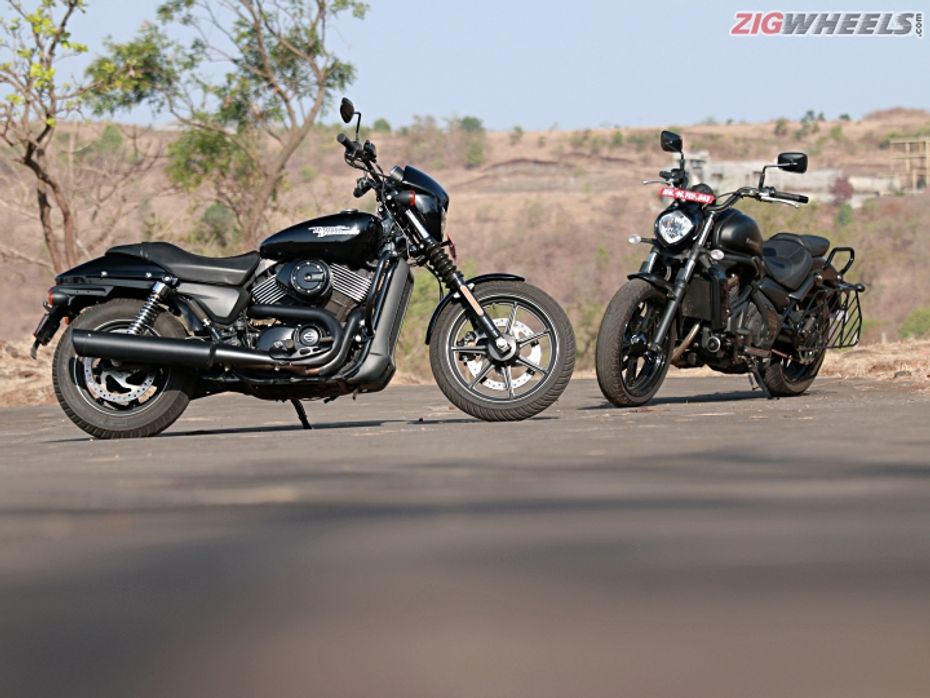
This comparison was quite a surprise as we thought the larger and more premium Kawasaki Vulcan S would easily win this shootout. It has more performance, is better built and has more presence. And at Rs 5.44 lakh (ex-Delhi) it is just Rs 19,000 more than the Street 750’s retail price of Rs 5.25 lakh (ex-Delhi). If your primary requirement is a large entry-level cruiser with loads of street presence and prefers long open roads, the Vulcan S makes a lot of sense. You though will have to live without the typical V-twin thump synonymous with cruisers.
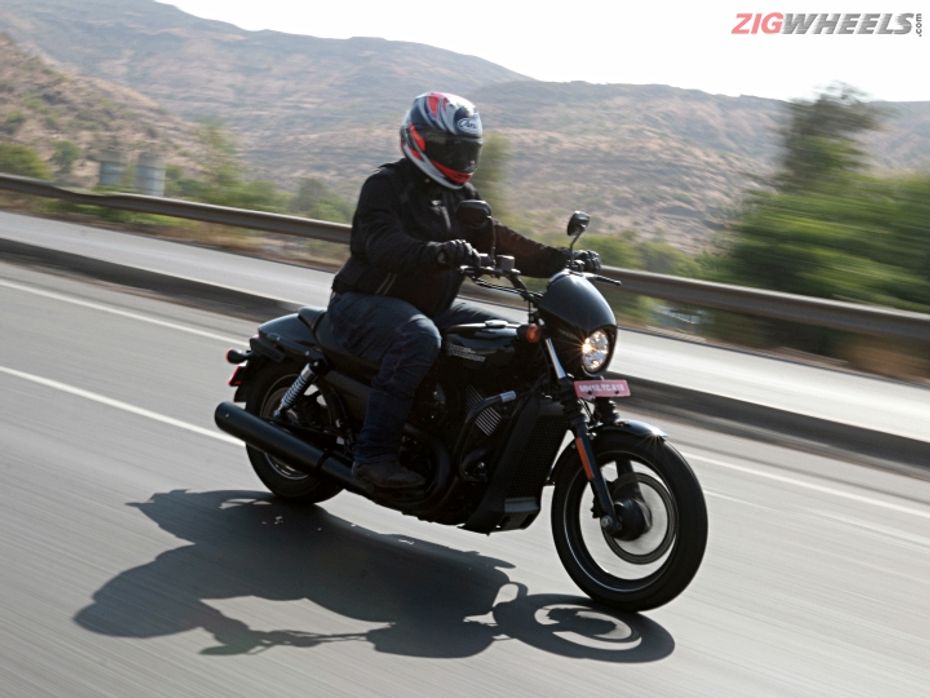
The Harley-Davidson Street 750 might not do the cruiser bit well but it is a versatile bike that will satisfy not just on the highway, but in the city and on the occasional twisties as well. Plus its blend of ride and handling and that sweet motor ups the fun factor by quite a few notches over the Vulcan S. And for this reason, it wins our hearts and this test.
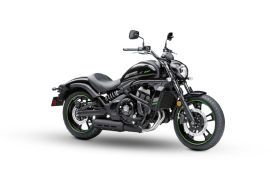

BS6 Kawasaki Vulcan S: Raw And Punchy

Kawasaki Vulcan S vs Harley-Davidson Street 750

Kawasaki Brings The 2022 Vulcan S To India With New Colours

Kawasaki’s Mid-capacity Cruiser Just Got Snazzier

Kawasaki Completes Its 650cc BS6 Range With The 2021 Vulcan S

Kawasaki Introduces New Colour For Vulcan S

Kawasaki Vulcan S - Top 5 Facts

Kawasaki Vulcan S Launched In India

Kawasaki Vulcan S India Launch Soon

Kawasaki may launch Vulcan S in India
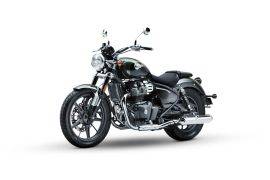 Royal Enfield Super Meteor 650
Royal Enfield Super Meteor 650
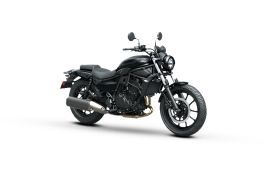 Kawasaki Eliminator
Kawasaki Eliminator
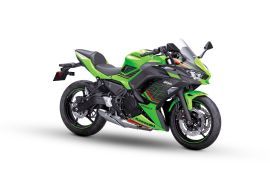 Kawasaki Ninja 650
Kawasaki Ninja 650
India's largest automotive community